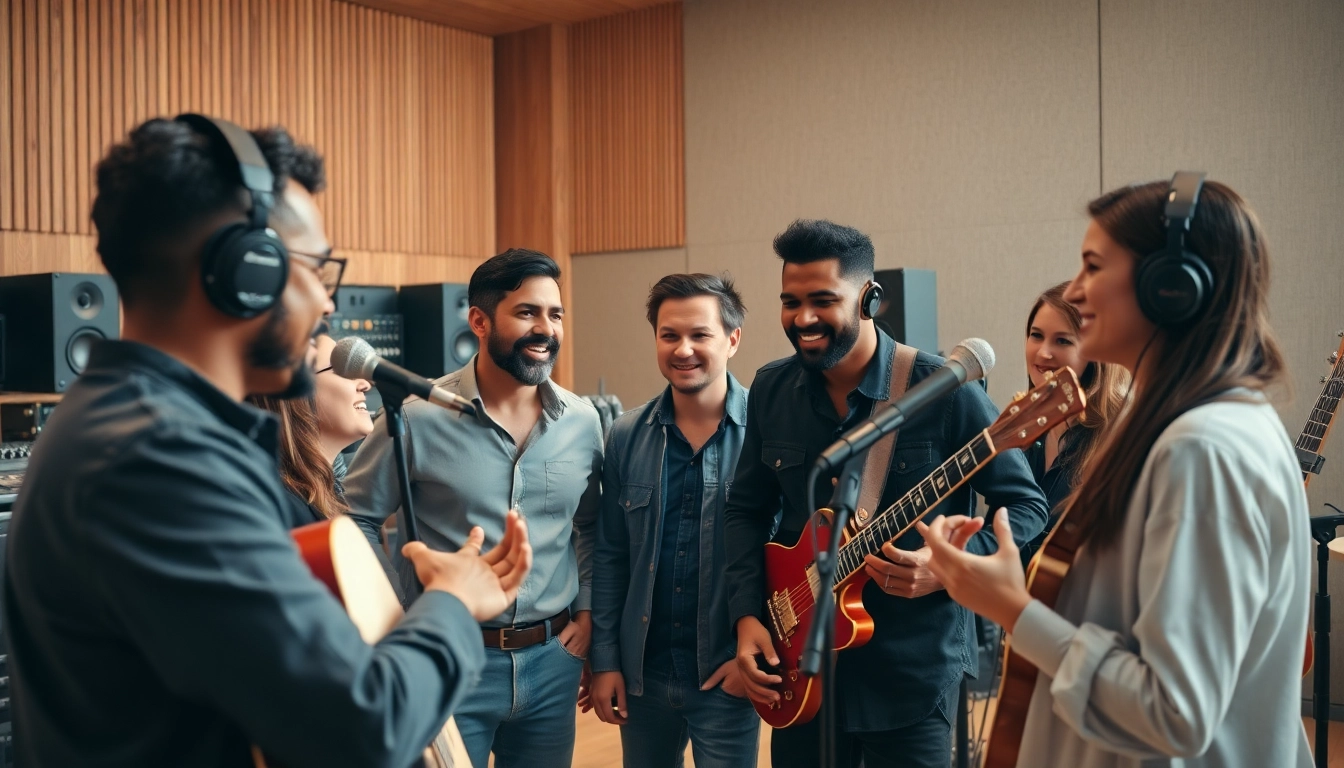Understanding the Essence of Stories & Documentaries
The art of storytelling is as ancient as humanity itself. From cave drawings to the digital screen, stories have been our way of understanding the world around us. Documentaries are one of the most compelling forms of storytelling, marrying real-life events with artistic expression. They serve not just to inform but to enlighten and inspire. In the realm of Stories & Documentaries, the focus lies on weaving narratives that resonate with audiences on emotional and intellectual levels. This journey will take us through the fundamentals of documentary storytelling, planning and researching the content, the technical aspects of production, and effective strategies for marketing and distribution.
The Importance of Storytelling in Documentaries
Documentaries have the unique ability to bring stories to life, inviting the audience to experience the reality they portray in an emotionally engaging way. Storytelling in this genre is critical because it transforms raw facts and data into narratives that can stir feelings, provoke thoughts, and inspire action. The successful documentaries weave factual information with personal touches—interviews, firsthand accounts, and emotional depth—that allow viewers to forge a connection with the subject matter.
Key Elements of a Compelling Documentary Story
A compelling documentary is built on several key elements:
- Strong Premise: A clear and compelling thesis statement sets the narrative’s direction.
- Relatable Characters: Viewers connect better with human stories; having relatable characters enhances engagement.
- Conflict: Conflict drives narratives forward. Whether this is a societal issue, personal struggle, or a natural disaster, demonstrating stakes keeps the audience invested.
- Resolution: Giving an insight into how conflicts are resolved adds depth and closure to the narrative.
- Visual and Auditory Elements: The use of strong images, music, and sound can enhance emotional impact.
Common Themes in Stories & Documentaries
Documentaries often explore universal themes that resonate across cultures and societies:
- Identity: Exploring personal or cultural identities is a common theme, as seen in documentaries focused on immigration, race, and belonging.
- Social Justice: Many documentaries aim to highlight injustices and advocate for change. These stories serve as rallying cries for social movements.
- Environmental Issues: The impact of climate change, conservation, and humanity’s relationship with nature is frequently explored in this genre.
- Human Experience: Examining the human condition—love, loss, struggle, and triumph—can create powerful narratives that resonate widely.
Researching and Planning Your Documentary Content
Before diving into shooting a documentary, thorough research and planning is crucial. A well-researched documentary will maintain authenticity and credibility, while effective planning helps in organizing thoughts into a coherent outline.
Identifying Your Target Audience for Stories & Documentaries
Understanding your target audience allows you to tailor the documentary’s themes, messages, and style. Are you targeting educational institutions, casual viewers, or a niche community? Knowing your audience influences how you tell your story and market it. Surveys, social media insights, and focus groups can all provide valuable data about audience preferences.
Conducting Thorough Research for Authentic Narratives
Your documentary should be grounded in facts and real-life context. Conduct thorough research, utilizing credible sources, expert interviews, and firsthand accounts. Nominate specific topics based on gaps in existing narratives or emerging trends. This research will not only provide depth but also inform the storyline’s direction.
Developing an Engaging Outline and Structure
After gathering information and insights, developing a structural outline is vital. A standard documentary structure may include:
- Introduction: Introduce the subject and the premise.
- Background: Provide context and the necessary background information.
- Main Content: Explore the main theme through experiences, interviews, and expert insights.
- Resolution: Sum up the narrative and provide a conclusion that invites contemplation.
Technical Aspects of Producing Stories & Documentaries
The technical elements of documentary filmmaking can significantly affect the final product. A well-executed production communicates its message more effectively, enabling emotional engagement.
Choosing the Right Equipment for Documentary Filmmaking
The choice of equipment depends on several factors, including budget, shooting style, and the nature of the documenting subjects. Essential gear includes:
- Cameras: DSLR cameras, mirrorless cameras, or camcorders depending on the production’s scale and desired quality.
- Lenses: Multiple lenses for different shooting scenarios enhance versatility.
- Audio Equipment: High-quality microphones are vital for capturing clear sounds, especially in interviews.
- Lighting: Understanding natural and artificial lighting is essential for setting the mood and tone.
Effective Cinematography Techniques for Visual Storytelling
Cinematography involves more than just operating a camera. Employ techniques such as framing, shot selection, and movement to enhance storytelling:
- Framing: Use framing to focus attention and create emotional reactions.
- Camera Movement: Panning, tilting, and tracking can help convey a sense of importance or urgency.
- Lighting Techniques: Manipulate lighting to create mood or focus, enhancing viewer engagement.
Sound Design and Editing Best Practices
Sound design encompasses the overall audio experience, including ambient sounds, narration, and music. Effective sound can enrich the visual experience, leading to a more immersive viewing environment. Editing is equally important as it shapes the narrative flow and pacing:
- Sound Editing: Balance audio levels, eliminate distractions, and enhance ambient sounds for a professional impact.
- Music Selection: Use music strategically to evoke emotions in alignment with on-screen content.
- Pacing: Ensure that the editing pace matches the narrative style; faster cuts may suit energetic content while slower transitions can enhance emotional depth.
Marketing and Distributing Your Stories & Documentaries
Once the documentary is complete, reaching your target audience is the next significant challenge. Marketing strategies should be established early on to ensure successful distribution.
Utilizing Social Media for Documentary Promotion
Social media platforms provide a powerful avenue for sharing your documentary with the world. Create engaging trailers, behind-the-scenes footage, or interactive content that encourages audience participation. By using platforms like Instagram, Facebook, and Twitter, you can build a community around your documentary even before its release, generating anticipation and enthusiasm.
Strategic Partnerships and Collaborations for Greater Reach
Collaborating with organizations, festivals, or other filmmakers can help broaden your documentary’s exposure. Seek partnerships with educational institutions, non-profits related to your theme, or film festivals for screenings. These collaborations can amplify your documentary’s impact and reach.
Analyzing Audience Feedback and Engagement Metrics
Gather feedback from viewers to gauge the documentary’s impact. Use analytics tools to assess viewer engagement metrics, such as view counts, shares, and comments. Audience feedback can inform future projects and provide insights into what resonates most with viewers.
Case Studies: Successful Stories & Documentaries
Examining successful documentaries provides invaluable lessons on effective storytelling and production techniques that can be applied to your projects.
Inspiring Stories from Notable Documentaries
Documentaries like “13th” explore systemic racism and incarceration, while “Won’t You Be My Neighbor?” delves into the philosophy of compassion and kindness emphasized by Fred Rogers. These documentaries resonate deeply with audiences, often inciting discussions and raising awareness on significant societal issues.
Lessons Learned from Successful Documentary Makers
Filmmakers often emphasize the significance of passion and persistence. Many successful documentaries started as small projects, driven by the filmmaker’s commitment to their subject matter. The best lessons come from embracing challenges and being open to constructive criticism throughout the filmmaking process.
Innovative Approaches to Storytelling in Documentaries
In recent years, innovative storytelling techniques have emerged, such as interactive documentaries or hybrid formats that blend fiction and non-fiction. Projects like “Bear 71” utilize digital interactivity to engage viewers, allowing them to explore themes of wildlife conservation in a captivating manner.
Ultimately, storytelling is at the heart of documentary filmmaking. By focusing on authenticity, thorough planning, and innovative techniques, you can create impactful Stories & Documentaries that resonate and incite change within your audience.



